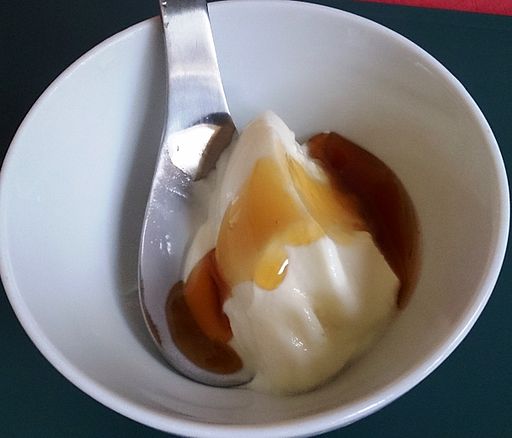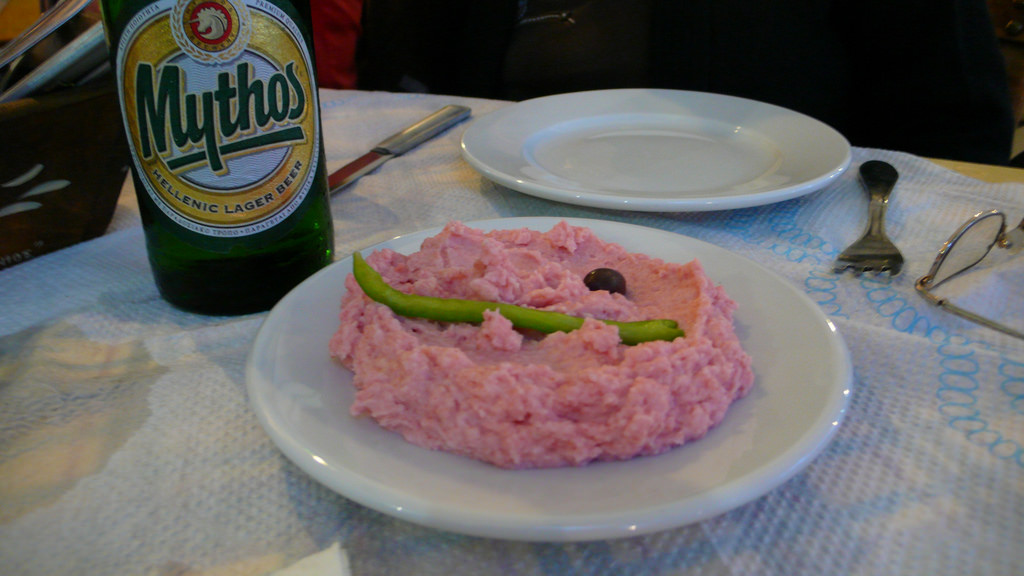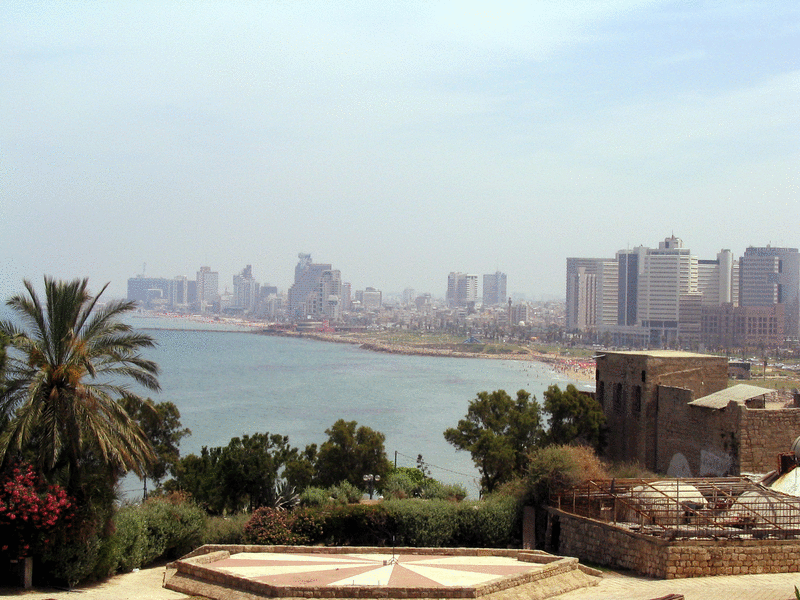Greek cuisine is amazing, surprising and tasty.
They have lots of meat dishes, such as the ever-popular gyro or the souvlaki. Other popular dishes include the Greek moussaka as well as seafood. A large part of the country is along the coastline and therefore Greek cuisine offers a rich selection of seafood specialities like calamari, various types of fish, octopus etc.
Their desserts are amazing as well; you can go for extremely sweet options like the loukoumades and bougatsa or stick to lighter desserts like Greek yoghurt and honey.
Of course, you mustn’t forget to order a shot of ouzo or a glass of retsina for a complete Greek dining experience.
Almost any dish, contains either lemon or tomato, but almost never both. This is true for meats, vegetables, legumes, and what we call “Ladera” which means “oily foods” and contains a wide variety of foods from green beans to “gemista”.
Greeks use olive oil for everything. They eat bread with almost anything (especially with the aforementioned “Ladera”, perhaps not with pasta). Greeks eat cheese in almost all our meals, and if the salad contains tomato and oil (like “choriatiki” or the one you call Greek salad) many people will dip the bread in the bottom of the plate to moisten it with oil and tomato juice. This is called a “papara” (which in other contexts can be a swear word) or more rarely “vouta”.
Finding a good souvlaki, a good bougatsa, a good frappe or espresso, a good cheese pie, is a must wherever you go. Greeks refuse to eat in touristy places where quality, especially in these can be lower. Ask the locals for all of these things, and 9 times out of 10, they will show you to the best place in the area. They will be happy to assist you, and even proud. Seriously, they have tasted these things a million times, they know what they are talking about.
It’s incredibly easy to live on a vegetarian diet in Greece. Not so much vegan, but for a vegetarian, it’s infinitely cheaper than most places in Europe. Fruits, vegetables, and whole grain stuff are of incredible quality, and so cheap. I mean it, if a country in Europe has the comparative advantage in incredible quality mass-produced vegetables, grains and fruit, it’s Greece and the margin from the second country is huge.
Tap water is served without charge in all restaurants, with the exception of some small Aegean islands.
Greek and Turkish traditional sweets, are nothing like you’ve ever tasted in Europe. Try them, you must. Whether it’s galaktoboureko, baklavas, kataifi or the more obscure “ravani” and “samali”, they are something completely different from what you have ever tasted in your life.
Greeks cook their meats good, really good.
Greeks don’t drink many sodas. Mainly coca cola, but even that, not so much.
There are some extra things that you should know as well. First, chocolates are a bit milkier compared to other countries. Greeks revere our local hard liquor, like ouzo, tsipouro and raki and local red and white wine. Cocktails are mostly for the summer. Burgers have somewhat of a following as well as hot dogs, but we mostly stay away from them. Greek pizza usually has too much bread. If you want to eat fish, your best bet is to find a trustworthy fish tavern recommended by others or locals, and ask them what is the freshest fish they have right now.
The best food to try when visiting Greece?
Greece is not only known for its rich history, art and famous monuments. It is also known for its unique cuisine. It is a Mediterranean cuisine and makes wide use of vegetables, olive oil, grains, fish, wine, and meat (white and red, including lamb, poultry, rabbit and pork).
Here are some of the best dishes you should try when you visit Greece,
Moussaka

This iconic Greek baked dish is based on layering: sautéed aubergine, minced meat fried pureed tomato, onion, garlic and spices like cinnamon and allspice, a bit of potato, and then a final fluffy topping of cheese and béchamel sauce.
Loukoumades

A Greek delicacy loved by children and adults alike, loukoumades are small fried doughnut-like balls drenched in honey syrup and sprinkled with various toppings such as cinnamon or crushed walnuts. People usually order a large plate of them to share with friends or family.
Souvlaki

Perennially popular all over the world, these grilled meat (usually pork) skewers are often served with tzatziki (a sauce made from yoghurt, cucumber and mint), pita bread, salad or rice.
Taramasalata

This creamy pungent dip is many people’s favourite. Made from smoked fish roe (cod, carp or mullet), blended with olive oil and lemon, homemade taramasalata is indisputably superior to the bright pink industrial version sold in supermarkets.
Greek Salad

You would have had a Greek Salad before, but you probably haven’t had it the prepared the “right” way, which is to say the way the Greek prepare it. A traditional Greek salad (also called Horiatiki) includes tomato, cucumber, green pepper, red onion, Kalamata olives and a rather large brick of feta cheese on top. It’s so fresh and light, that it’s hard to resist ordering it.
If you want to discover the top Greek dishes to try to check out this list of amazing Greek dishes.
Yoghurt–

Among all varieties of yoghurt, Greek yoghurt is the healthiest. It has the perfect ratio of protein and carbohydrate and is a brilliant post-workout snack. If you have a bowl of Greek yoghurt within 60 minutes of your workout, it releases amino acids that help repair muscles. Have a glass of water with your yoghurt and it improves the absorption of water by intestines thereby enhancing your hydration and also helps in colon detox.
A bowl of yoghurt is said to have 300 grams of calcium. So, if you are worried about your debilitating bone health, it’s always good to add yoghurt to your diet. It will not only maintain your bone density but also strengthen them. For the elderly who are at risk of osteoporosis, a cup of yoghurt daily after lunch is a healthy option.
People consuming yoghurt proved that if you replace an unhealthy snack in a day with yoghurt, it will help you cut down calories. This also helps burn belly fat.
In conclusion, Greece isn’t the most beautiful country in the world, but a very beautiful one. It doesn’t have the warmest or smartest people, although Greeks are one of the friendliest, creative and hard-working.
You may also like
Source- Mark Wiens
You may like to read




